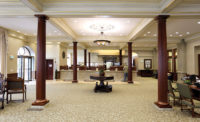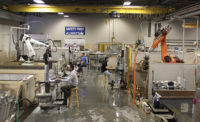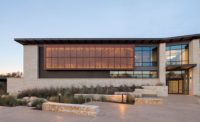Coldspring, a large North American stone producer, recently provided a virtual tour of its Mesabi Black granite quarry in Babbitt, MN, through a webinar offered by the Natural Stone Institute. Jason Kron, Coldspring director of sales, joined Dacia Woodworth, architect & design community liaison and special projects manager for the Natural Stone Institute, and artist/sculptor Brad Goldberg of Dallas, TX.
Learning objectives for the presentation included:
- An overview of an operating granite quarry and its history will highlight natural stone’s durability and sustainability and exemplify that utilizing natural stone in projects can benefit both user and nature.
- Discover the geological composition of the granite harvested from an active quarry and the testing specifications available to ensure its properties are an accurate fit for certain installations and design.
- By providing installation examples and recommendations from a technical stone professional, the attendee will gain an understanding of the stone’s attributes and its performance in specific environments for optimal performance.
- An overview of the granite utilized in creative projects by a design professional will highlight aesthetic success in past installations and provide insight for future creative opportunities for the consumer.
At the start of the session, Goldberg expressed his impression of stone to the audience. “It is a good number of things,” he said. “First of all, it is timelessness, and second for me is its beauty. I think about things like durability – lasting hundreds of year. It is also versatile and sustainable. Maintenance is something my clients are most interested in, and stone is a very easily maintainable material.”
The presentation soon transitioned into the geological composition of stone. In particular, Kron explained a granite formation. “The process of slow cooling of the magma is what gives granite its qualities of strength,” he said. “Keep in mind, this is constantly happening. Stone is always being recycled within the earth.”
Kron went on to explain that if a stone comprises mica, feldspar and quartz, it is classified as a granite. “You can tell a lot of how stone is formed by looking at its texture,” he said.
A poll question was asked to determine if participants see an increase in customer demand for sustainable design in projects. A total of 75% responded “yes,” while the additional 25% said “no.” “I think most of my customers are interested in sustainability, and when they hear stone is a sustainable product they become very satisfied and know they are doing the right thing,” said Goldberg.
Kron shared how quarrying methods have progressed over the years. “In the earliest days, at least in Minnesota, quarriers would drill into the stone and then fill the holes with water and let them sit all winter,” he explained. “Obviously things have changed a lot when it comes to quarrying. It’s not the same safety precautions in place now.”
Additionally, Kron told participants that Coldspring’s Mesabi Black granite quarry, as well as most of the company’s other sites are certified through the Natural Stone Institute. He explained how Coldspring is very conscious of what it is doing with its water and how it handles waste product. If some of the product is not able to be used for dimensional work, it will be converted into aggregate. We are very careful to use everything that we take out of the ground.”
“These are all taken into consideration,” said Kron. “The Mesabi quarry is in a very rural and natural setting. We leave it if not in the same condition it was, but even a better condition.
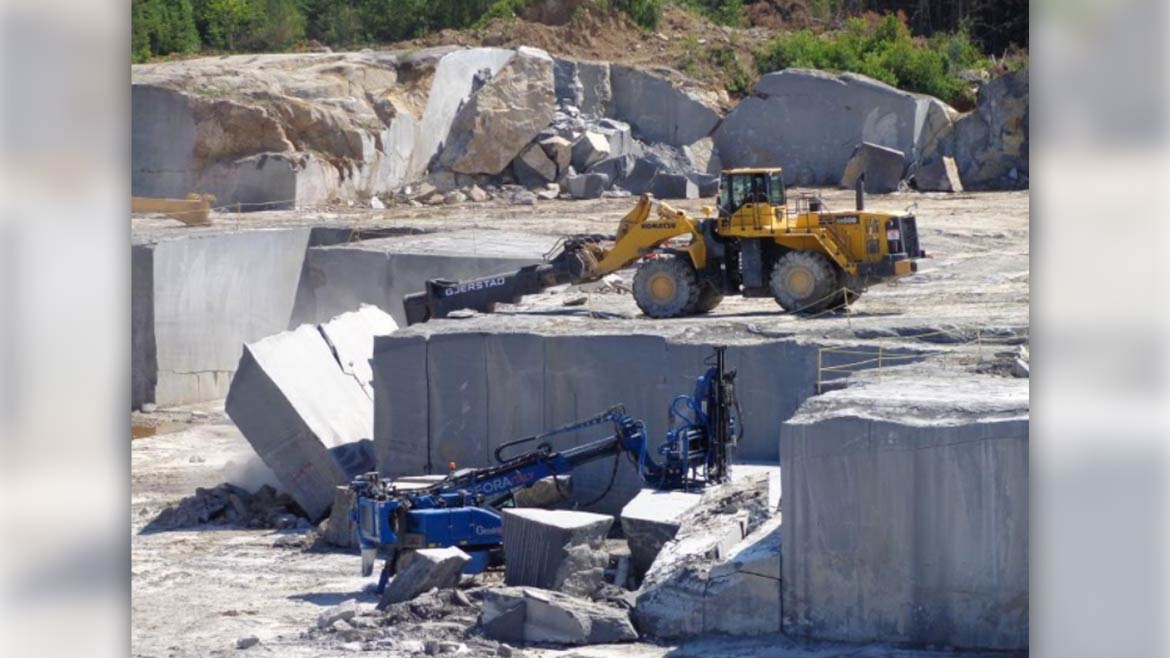
“We are quarrying a peak of a massive mountain range,” he went on to say. “We have been there since the 1990s. The site is as large as a construction site. We will be quarrying for many more years. The footprint won’t expand because we will continue to go down.”
Kron also explained that the aesthetics of the stone can change on the basis of finishes. “Granite can be used for so many applications because of its aesthetics and physical qualities,” he said.
Goldberg shared a recent project he completed, “Turn to the River” in Terre Haute, IN. “It is an effort to return to the river as cities orientated themselves away towards the highway,” he said.
The site was located not far from the Wabash River. Goldberg explained there was a fountain set between the Town Hall and the courthouse, which are both made with Indiana limestone. Due to the hard water of the city, the concrete of the fountain had decomposed. Goldberg was asked to reconsider a new fountain.

“The idea was to extrapolate the patterns of the landscape with the river running through it,” he said. “In doing so, I thought about Mesabi Black, a stone I am deeply in love with. It seems to be a great contrast between the two limestone buildings. Also with the hard water quality, they were very concerned about mineral deposits with stone. It was determined granite was the best choice because of its impervious nature. It wouldn’t develop a lot of mineral deposits.”
The artist went on to say he used two different kinds of sandblast finishes, as well as a honed and dust finish. The granite block was 4 feet high x 9 feet, 6 inches x 9 feet 6 inches.
“I encourage anyone to go to a quarry because you see things that you wouldn’t normally see --especially the Mesabi one is a beauty,” said Goldberg. “I wanted to use a splitface/rockface texture, so we had to allow more material on the block to achieve that.
“I try to keep up with stone technology so I know what capabilities exist,” Goldberg continued. “I find out what the weight limits are so I can get the biggest block possible. There is a cooperation between many disciplines.”
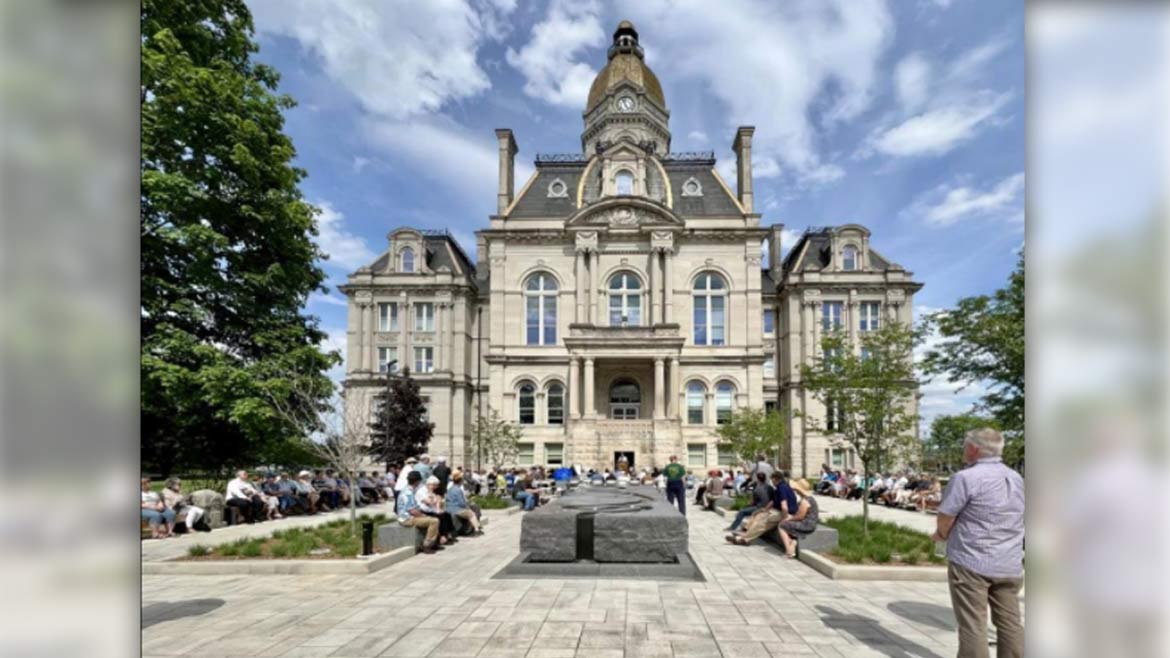
The water feature spanned 42 feet long. “In my opinion, Mesabi Black granite was the perfect choice for this building,” said Goldberg. “They create a dynamic conversation with each other. People seem to have really responded to it.”
In wrapping the session up, Kron said Coldspring with be celebrating 125 years next year with a fourth generation preparing to lead. “We specialize in the memorial market,” he said. “[Turn to the River] is a creative example of how we enjoy collaborating with artists and architects.”


